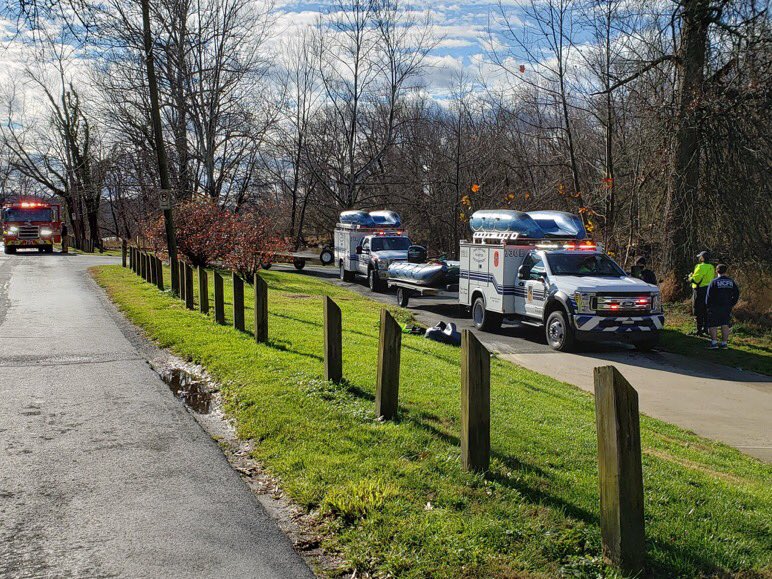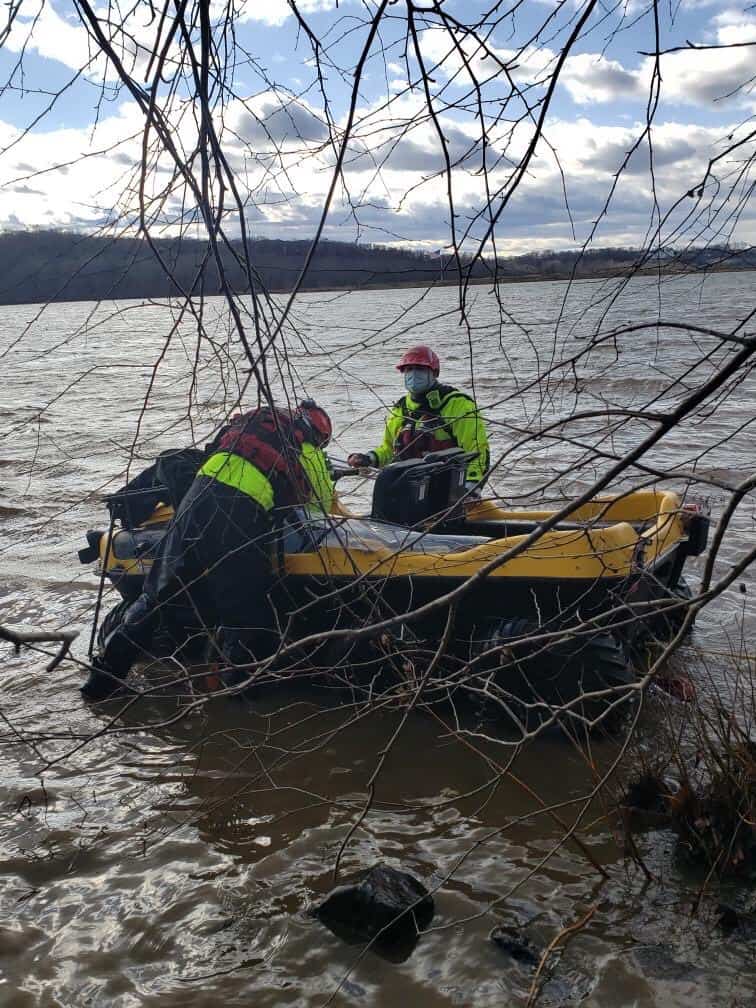A most unusual water rescue unfolded in the Potomac River last week, and thankfully emergency responders got to the victim before the cold water did. But fire officials are calling it a cautionary tale.
A Washington D.C. man took an amphibious ATV into the Potomac last Tuesday, a day when conditions on the water were especially rough, and the vehicle capsized. The man, who was in his 40s, was able to call 911 from his cell phone and tell responders where he was. Montgomery Co. Fire and Rescue crews found him clinging to the vehicle, suffering from hypothermia.
“It was obviously not a safe vehicle to use in that environment. The Potomac River has pretty strong current in some areas. That particular day it was windy. I mean there were waves on the river,” says Pete Piringer, spokesman for Montgomery Co. Fire and Rescue Service.
It happened in the area of Riley’s Lock, Piringer says, across from the Trump National Golf Club in Loudoun County, Virginia. Piringer says amphibious vehicles like that one aren’t typically seen around the Potomac, and aren’t suited for strong currents or waves.

The driver had begun taking on water at Seneca Creek because of a missing bilge plug. Piringer says the vehicle was just overcome with water. “Once water got into the craft, there’s no way for him to get it out,” he tells Bay Bulletin.
The man did have a life jacket on, but wasn’t dressed for cold water with a wetsuit. At the time he capsized, the water was about 50 degrees, and the air was 42 degrees, but with 15 mile per hour gusts, the windchill was closer to 33 degrees.
He was taken to the hospital and treated for hypothermia. Piringer calls the rescue a “cautionary tale”, reminding small craft operators to take note of water and weather conditions. Situational awareness and communication is key:
“Have a cell phone with you and know where you are on the water at all times,” says Piringer.
-Meg Walburn Viviano




